You can contact LEARNZ, part of CORE Education, at:
Postal Address:
PO Box 13 678,
Christchurch 8141,
New Zealand
<- Homepage: Waste not Wasted: The science of waste at Kate Valley
Kia ora everyone,
The weather was still warm as we made our way to Kate Valley Landfill this morning. I was looking forward to the first full day of the field trip.
Starting with a web conference
We began the day with our first web conference for the field trip. Waitākiri Primary School was our speaking school and our web conference expert was Rangi Lord. If you couldn't be part of the live web conference, you can always listen to the recording. There is a link on the field trip web conferences page. There was some interesting discussion so it’s worth the time.
A ride in one of the truck-and-trailer units
After the web conference we were lucky enough to get a ride in one of the CWS trucks that haul waste to Kate Valley. The driver picked me, the ambassadors and Rangi up along the road from the landfill. The ambassadors thought it was all rather exciting!
On the drive up to the landfill, Rangi explained how waste from the Canterbury region is taken to a transfer station. At the transfer station the waste is compacted into large blue bins. When the blue bins are full, it is time for the CWS trucks to pick them up and transport them to the landfill. Each truck carries two bins.
Weigh to go
As each truck reaches the entrance to Kate Valley it drives onto a weighbridge. The total weight, minus the weight of the truck, equals how much waste that truck-and-trailer unit has brought into the landfill.
The blue bins are then unloaded. That truck then takes away two empty bins back to the transfer station. A different truck then picks up each bin and takes it into the landfill. These 8-wheel drive trucks are more for "off-road" use so are better suited to carting the bins into the landfill, especially during winter when conditions can be quite muddy!
This truck empties the waste from the blue bin into the landfill. A bulldozer spreads the waste evenly within the area, and another bulldozer compacts it. At the end of each day soil is spread over the waste and compacted.
Why is compacting the waste important? How does the daily soil cover help?
Leachate
Rangi then took us to a leachate collection area. What is leachate? Rangi answered this question by showing us a container of his lawn clippings. He explained how leachate is a liquid created when organic waste, like lawn clippings, decomposes. Mixed with inorganic waste, this leachate can be somewhat toxic, so it must be collected and treated. How is the leachate collected? It’s all to do with a special liner that the waste sits on in the landfill.
The liner
After some lunch, Kelvin Head took us down into the landfill. Kelvin was able to show you the different layers that make up the liner. The liner is what stops leachate entering the groundwater. It was amazing to see that there are four layers to the liner. Five if you include the gravel that sits on top of it all. Two layers of the liner are made of high-density polyethylene (HDPE). You can watch the video to see how the layering works and just how tough the HDPE is!
Monitoring groundwater
Finally today, Rangi explained to you how groundwater just outside the landfill is monitored. Water samples are taken from wells that were set up before the landfill started receiving waste. The samples are sent to a laboratory for testing which will show if leachate is escaping from the landfill. This testing happens every three months. The good news is that no leachate has escaped since the landfill started taking waste. It’s good to know that the liner is doing its job!
Talk to you all again tomorrow,
Andrew

Andrew and the ambassadors with Rangi on this morning's web conference. Image: Shelley Hersey, LEARNZ.
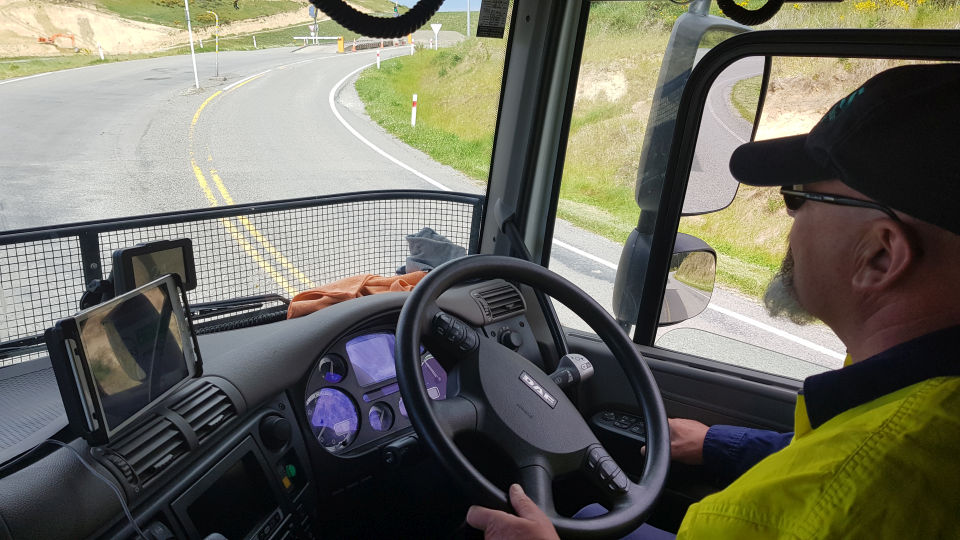
A view from inside the cab of one of the CWS truck-and-trailer units that haul waste from the transfer station to Kate Valley Landfill. Image: Andrew Penny, LEARNZ.
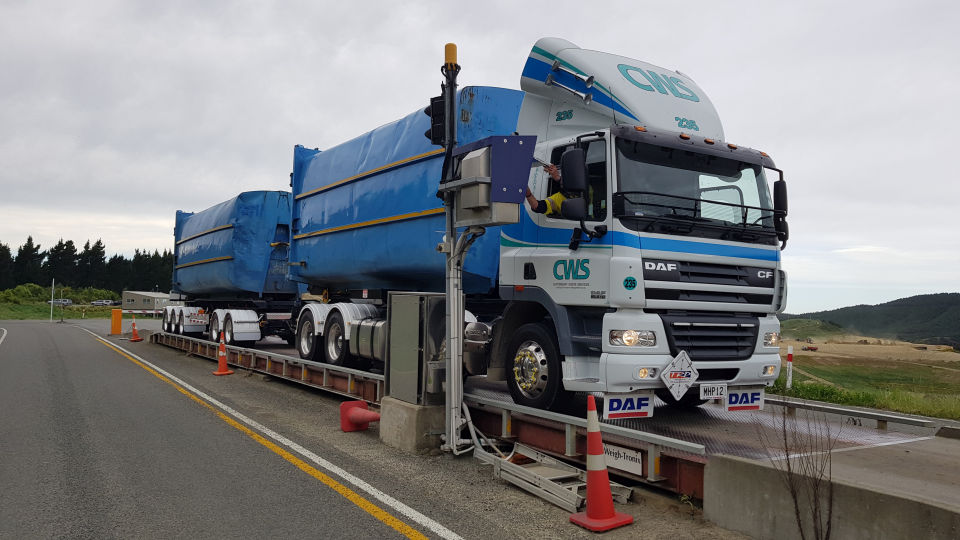
Trucks are weighed on a weigh bridge before entering the landfill. How does knowing the weight of each truck help? Image: Andrew Penny, LEARNZ.
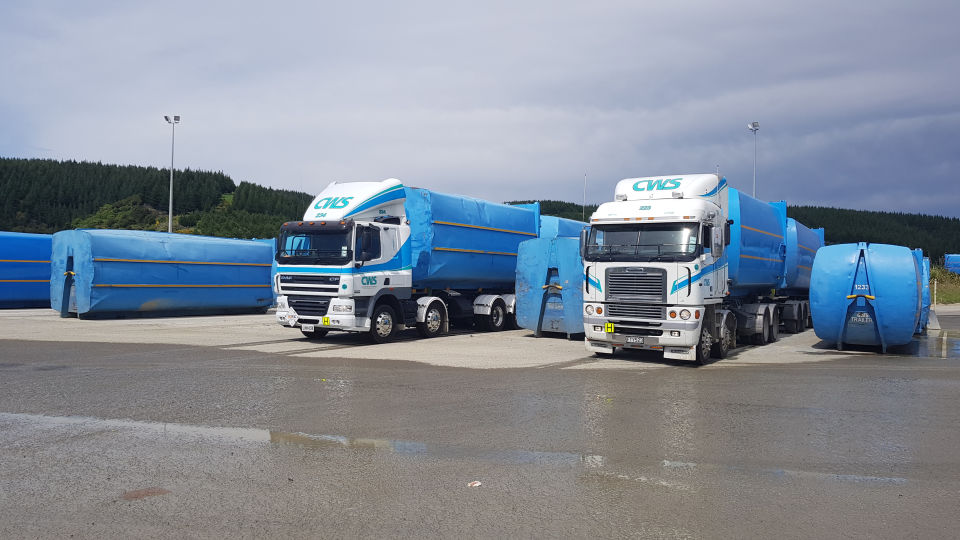
The blue bins are set down. These trucks then take two empty bins back to the transfer station. Image: Andrew Penny, LEARNZ.
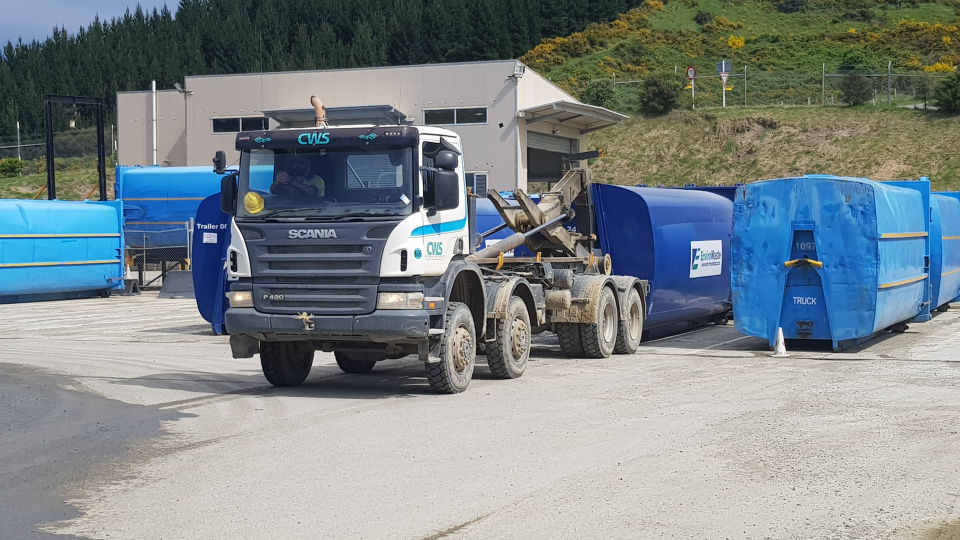
A special 8-wheel drive truck picks up a blue bin and takes the waste to the tipping face. Image: Andrew Penny, LEARNZ.
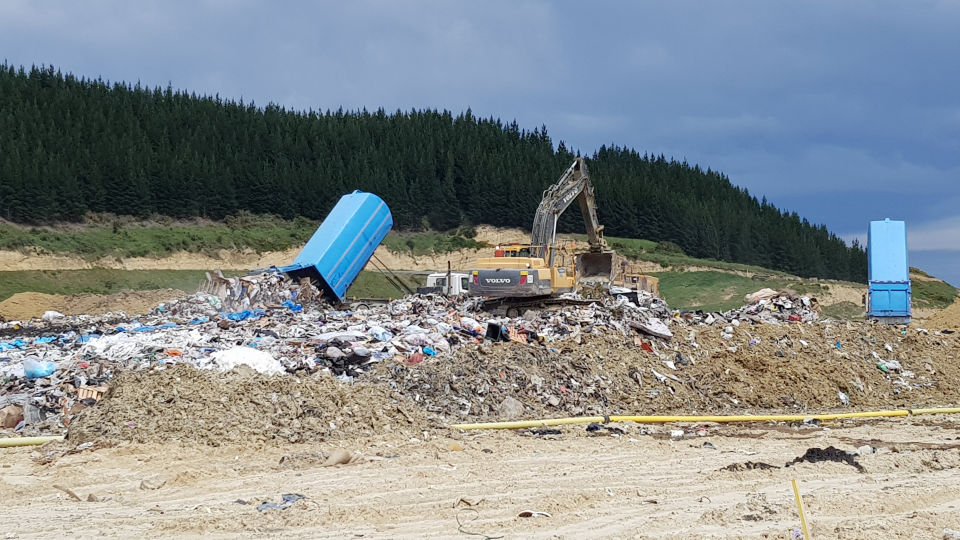
The blue bin is finally emptied into the landfill. Image: Andrew Penny, LEARNZ.
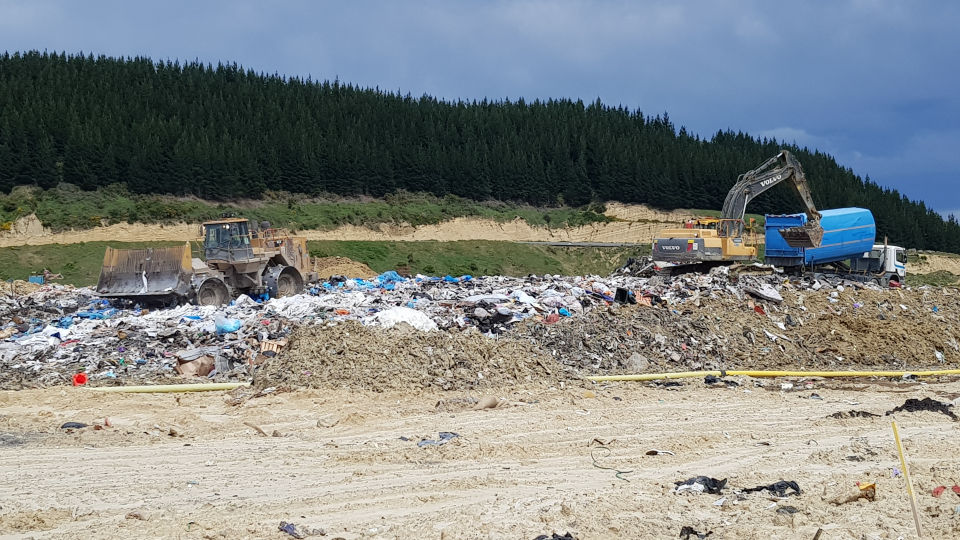
A large bulldozer spreads the waste, and another bulldozer compacts it. Image: Andrew Penny, LEARNZ.
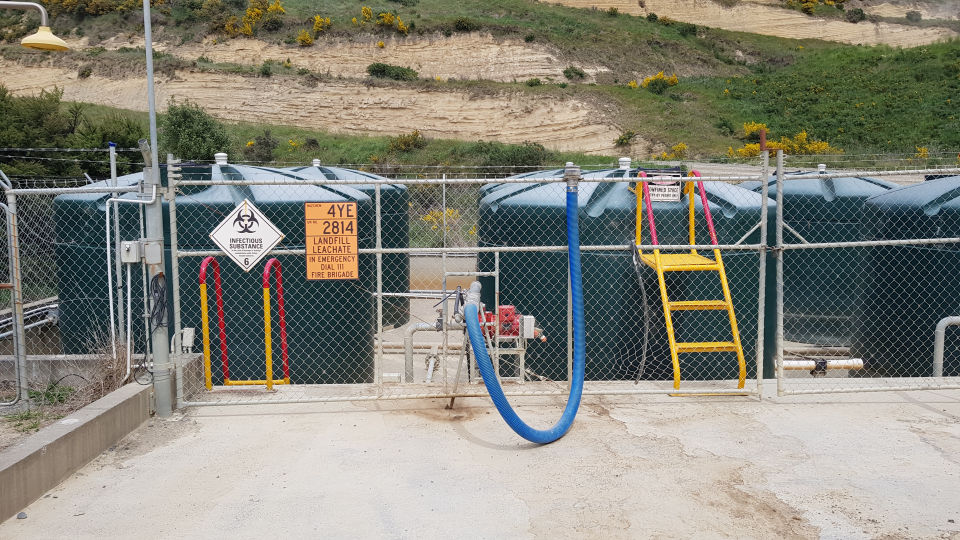
Leachate is collected from the landfill and kept in holding tanks before being treated. Image: Andrew Penny, LEARNZ.
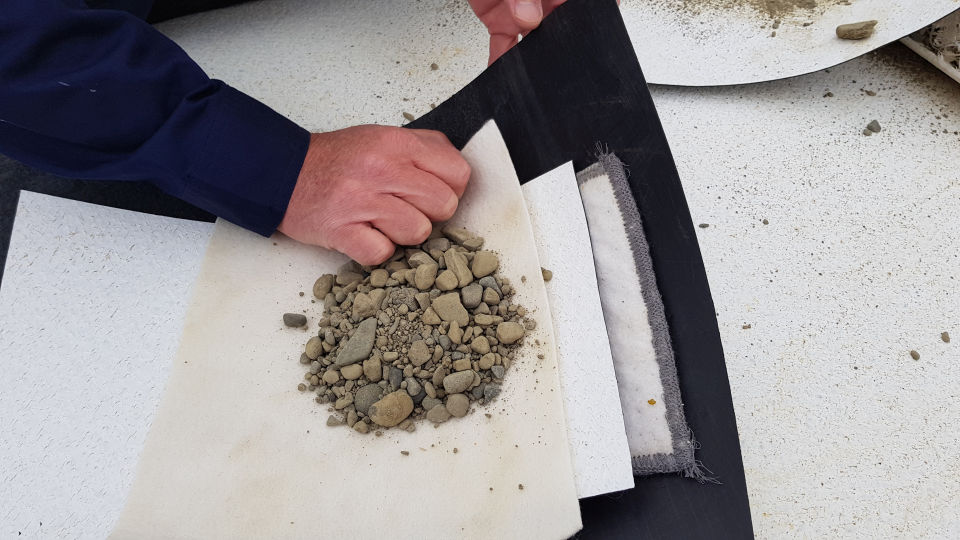
Here you can see the different layers that make up the landfill liner. Why is the liner so important? Image: Andrew Penny, LEARNZ.
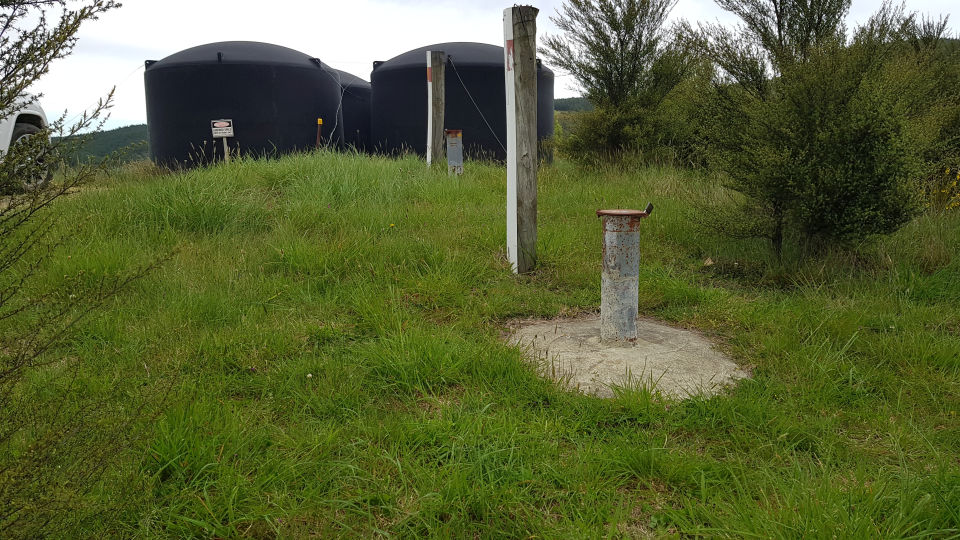
Wells outside the landfill enable samples to be taken from groundwater. What can samples from the groundwater show? Image: Andrew Penny, LEARNZ.